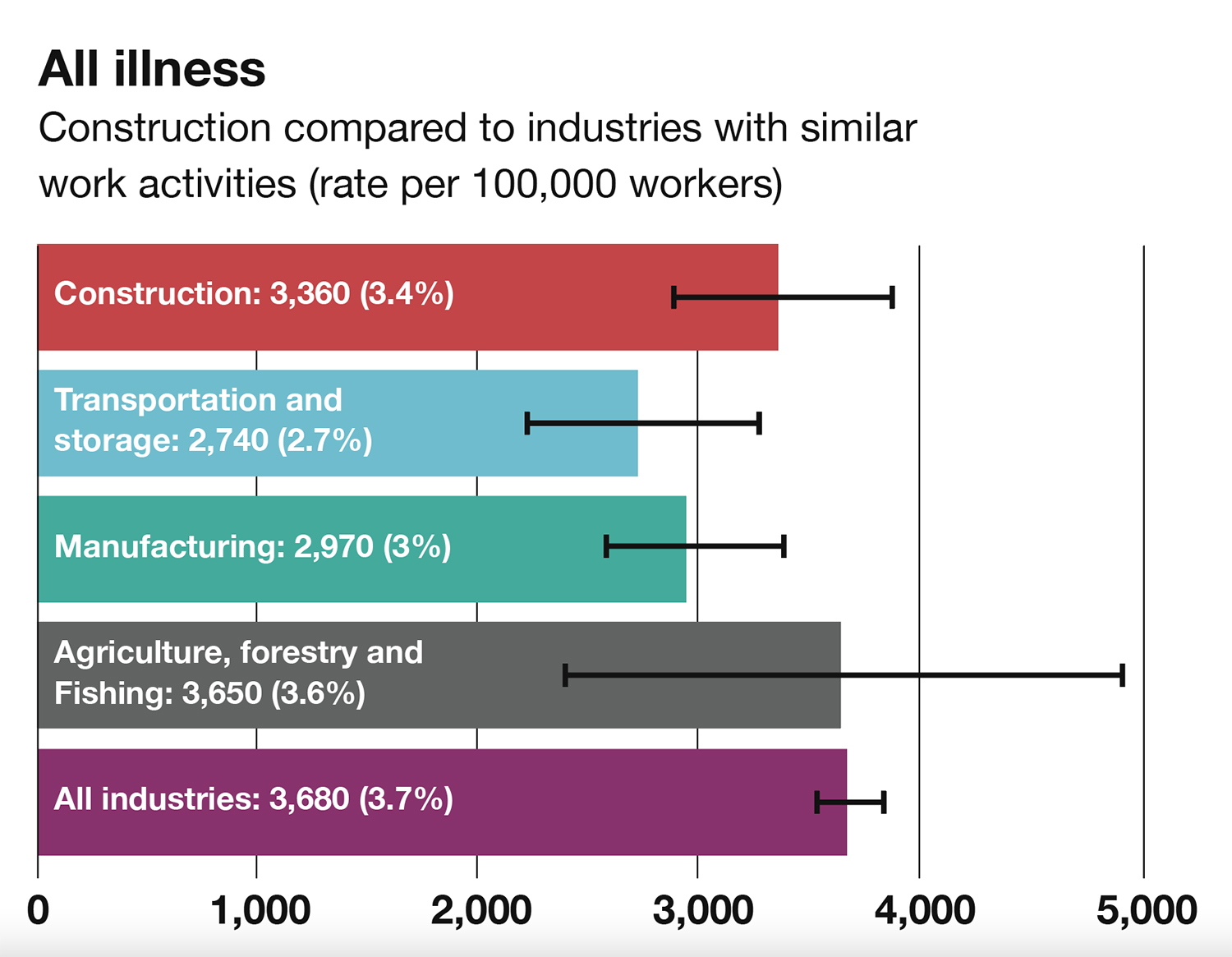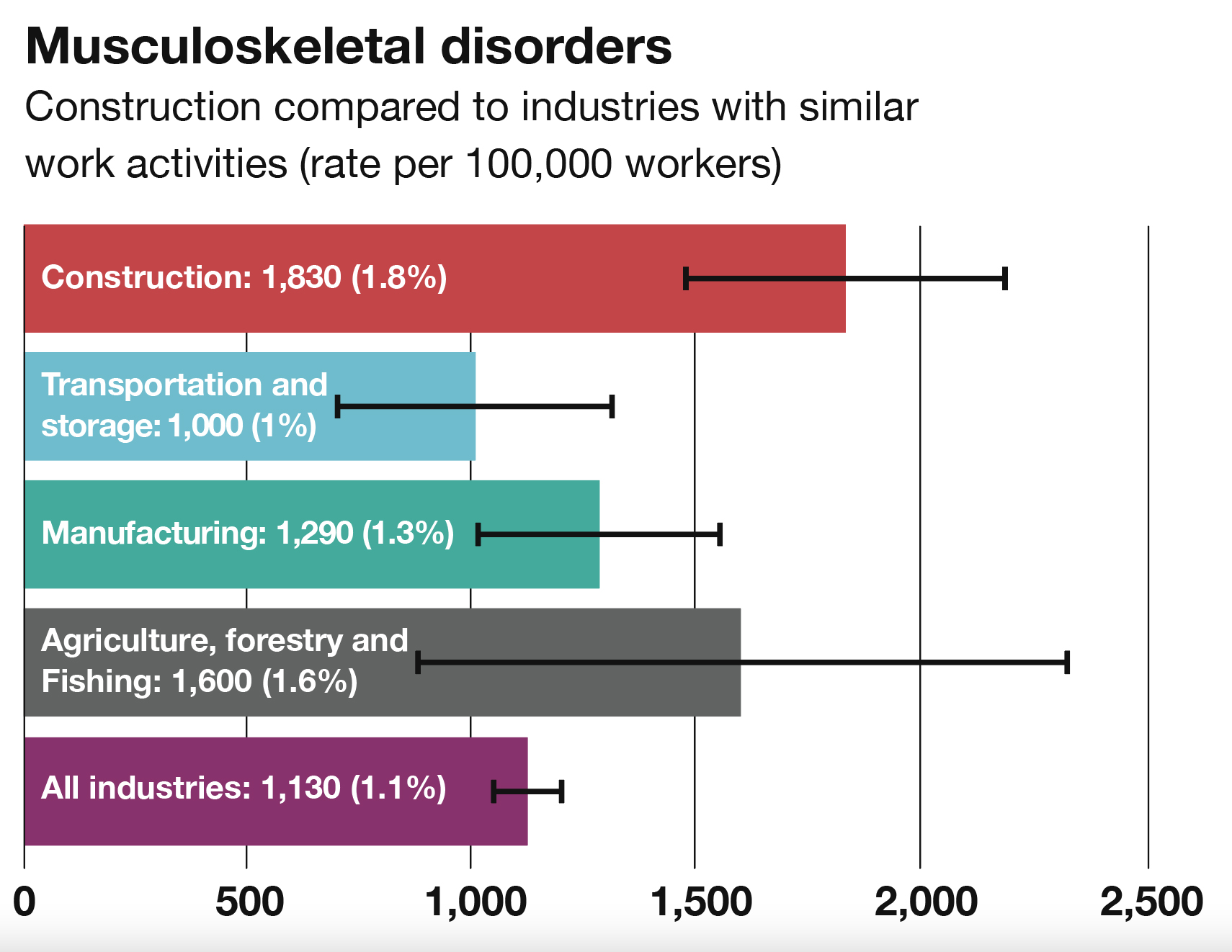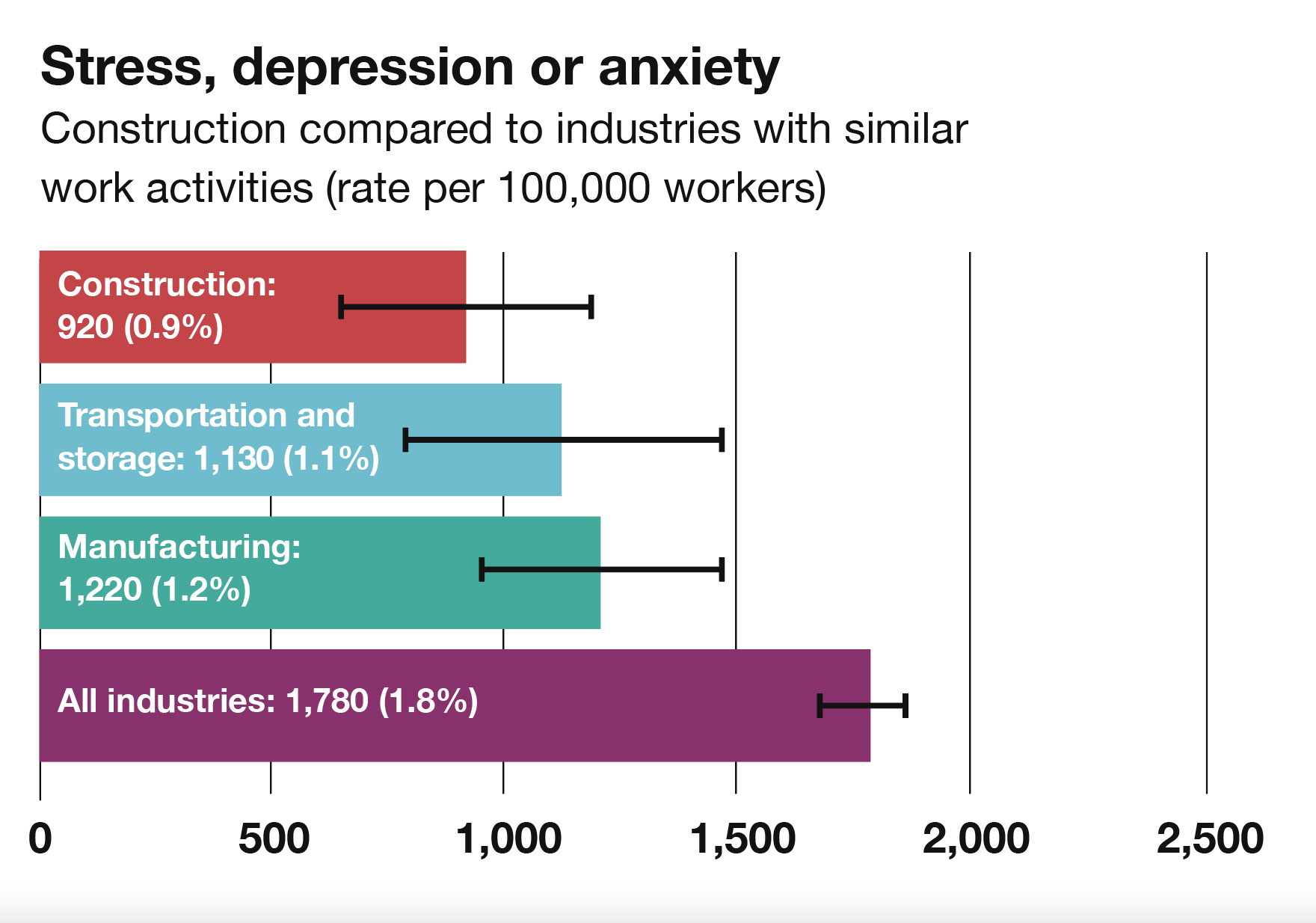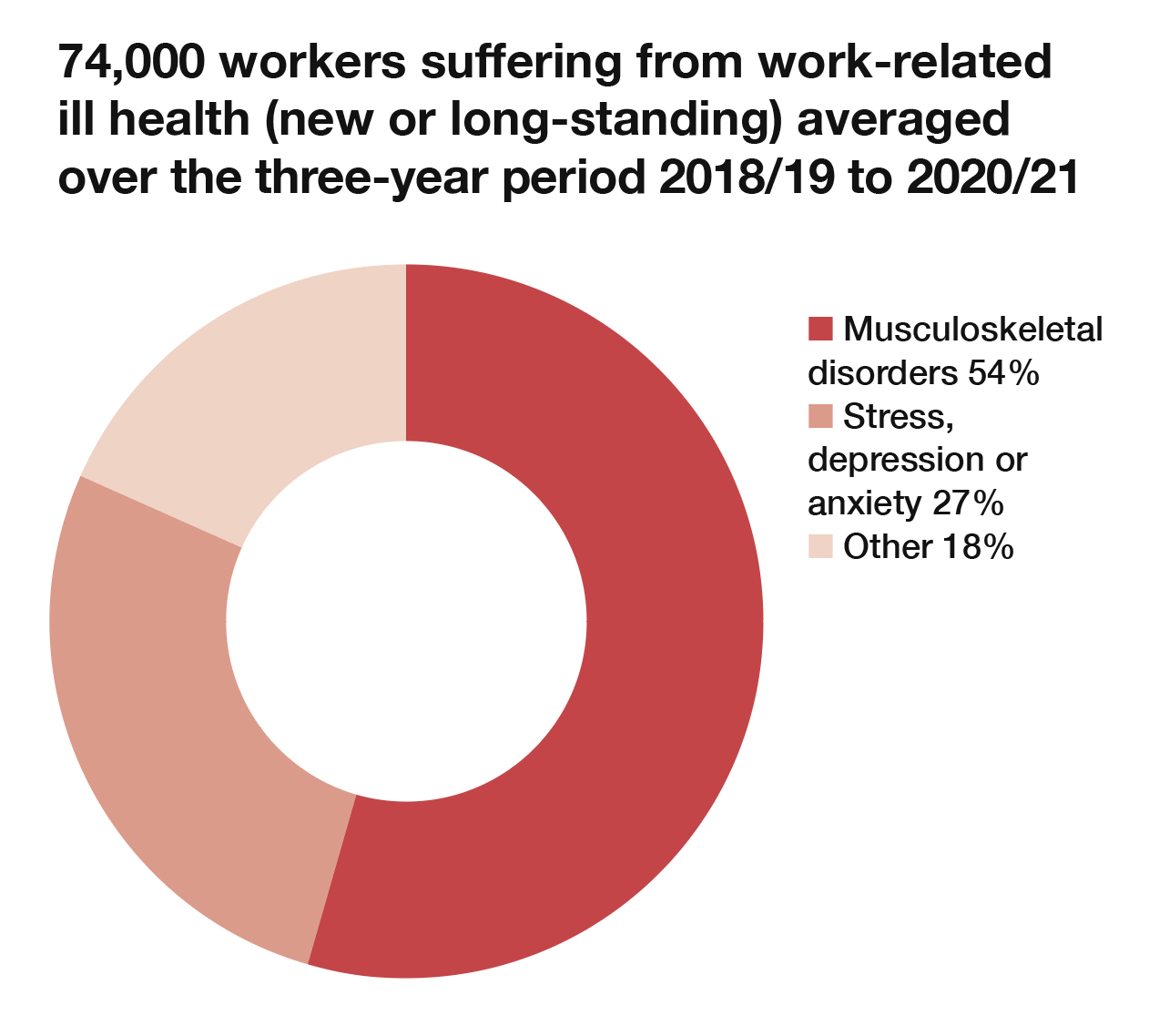
Stress and depression also account for a high proportion of health problems in the sector, as illness rates unaffected by the pandemic.
As illness across the nation drives record numbers of people out of work, the construction sector continues to struggle with work-related health problems. Some 74,000 construction workers were reported to be suffering from work-related ill health, as averaged out over the three-year period 2018/19 to 2020/21, according to figures from the Health and Safety Executive (HSE).
Of these illnesses, an estimated 40,000 workers (1.8% of all workers in the sector) suffered from work-related cases of musculoskeletal disorder (new or long-standing), compared to 1.1% of workers across all industries.

Expressed another way, 54% of all ill health in the construction sector is caused by pains and disabilities affecting muscles, joints and tendons in all parts of the body.
During October HSE inspectors focused on moving and handling construction materials to make sure sites were using sensible control measures to protect workers from injuries and musculoskeletal disorders (MSDs).
Overall, in the year 2020/21, the construction sector had an ill health prevalence rate of 3,360 per 100,000 workers (3.4%), compared to an all-industries rate of 3,680 per 100,000 (3.7%). The numbers for both ill health and MSDs were unchanged throughout the coronavirus epidemic.
There were also an estimated 20,000 work-related cases in construction of stress, depression or anxiety (new or long-standing), representing 27% of all ill health in this sector.

In percentage terms, around 0.9% of workers in the construction sector reported suffering from stress, depression or anxiety that they believed was work-related (new or long-standing cases). This rate is statistically significantly lower than that for workers across all industries (1.8%).
Coronavirus pandemic
Prior to the coronavirus pandemic, the rate of work-related stress, depression or anxiety for all industries had been broadly flat over the previous three years. The rate for the latest period, which includes years affected by the coronavirus pandemic, is not statistically significantly different from the previous period.
According to the reporting scheme for occupational respiratory disease, the rate of occupational asthma is 0.5 per 100,000 construction workers. There are various causative factors linked to this including occupational exposure to fumes, chemicals and dusts and environmental pollution but smoking is the single most important factor. Roofers were significantly more likely to suffer than other construction occupations.

Dermatitis is also a problem across parts of the construction sector, with plasterers suffering at a rate of 10.2 per 100,000 workers, compared to the overall rate for construction of 1.6 per 100,000 and the all-occupations rate of 2.14 per 100,000 workers.
Occupational cancer
Research into occupational cancer commissioned by the HSE indicates that across all industries, past occupational exposure to known and probable carcinogens is estimated to account for about 5% of cancer deaths and 4% of cancer registrations currently occurring each year in Great Britain. This equates to about 8,000 cancer deaths and 13,500 new cancer registrations each year. Of these 8,000 deaths, it is estimated that around 3,500 would be in the construction sector.
An epidemiological study of mesothelioma, a form of cancer that follows the inhalation of asbestos fibres, in Great Britain suggests that about 46% of currently occurring mesotheliomas among men born in the 1940s are associated with the construction industry including carpenters, plumbers and electricians.

Some 17% can be attributed to asbestos exposures through carpentry work alone. A key factor in causing the higher risks now seen in these former workers appears to be the extensive use of insulation board containing brown asbestos (amosite) within buildings for fire protection purposes, says the HSE.
Across the country, the number of people not looking for work because they are suffering from a long-term illness has hit a record high of nearly 2.5 million, according to the latest official figures from the Office of National Statistics.











